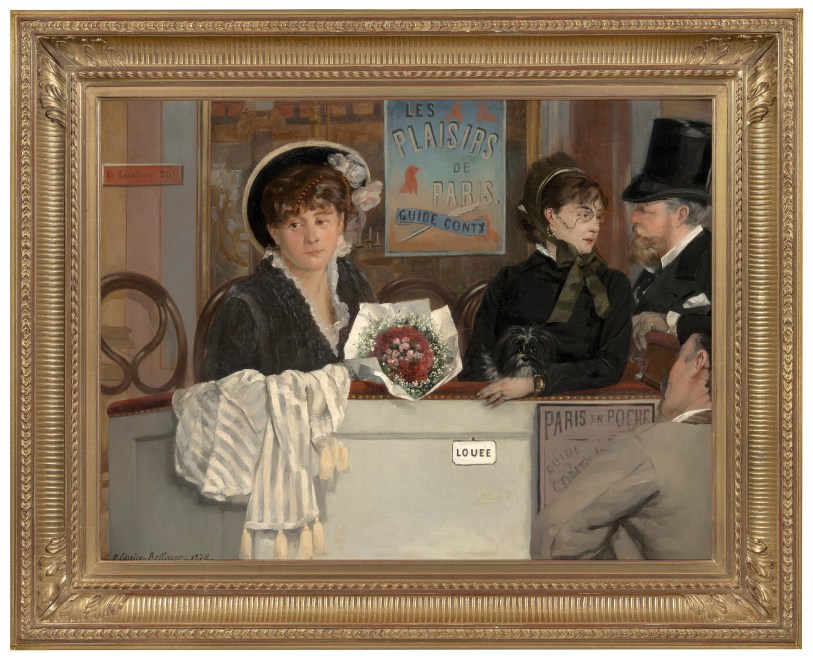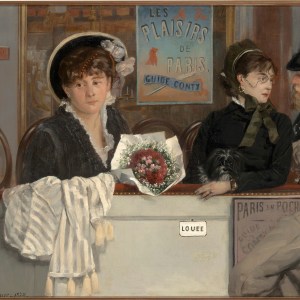Provenance
Paris, Galerie Hagnauer, October 1979
Sale: Christie's, Paris, 20 June 2007, lot 101
Private collection, Minneapolis (acquired at the above sale)
Catalogue note
Most well-known for his impressionistic depictions of ballet dancers, Pierre Carrier-Belleuse also painted exceptional works that documented urban life in modern Paris. From passengers in railway cars to spectators at the theatre, he was a keen observer of the everchanging societal structure that defined the era. By all accounts, more than half a million Parisians went to the theater at least once a week at the end of the 19th century (Barbara Stern Shapiro, Pleasures of Paris: Daumier to Picasso, Boston, 1991, p. 109). While the subject of the performer provided recurring themes; we think specifically of Degas’s ballerinas and Manet’s Spanish dancers, it was more the interaction between the spectators, often seated in loges, that interested the painters and often provided a subtle social commentary. We think specifically of the paintings by Degas, Manet and Mary Cassatt and especially their paintings of people in cafés, music halls and café-concerts.
This is also the milieu that Carrier-Belleuse has captured in Les Plaisirs de Paris. The title is taken from journalist, Alfred Delvau’s pocket guide to Paris first published in 1867, which provided readers (clearly a male readership) with a handy summary of Paris’s “hottest” cafes, restaurants, theaters, circuses, balls, social clubs, horse tracks and marine sports. Carrier-Belleuse has cleverly placed an advertisement for Delvau’s guide in the center of the painting. One may even assume the painting itself becomes an illustration for the guidebook. While there may be some ambiguity as to what is taking place – is the young girl alone, or is she with the be-speckled woman, perhaps her mother? Are the two men together and is the bearded man arranging a rendezvous between the man smoking the cigar with the woman holding the bouquet? One thinks of Colette’s Gigi. Most likely we are privy to three separate vignettes; a young woman is reluctantly for rent (as the sign “louer” would suggest) to the man with his cigar, while the respectable couple with their small dog are totally oblivious and only focused on themselves and the start of the show.








